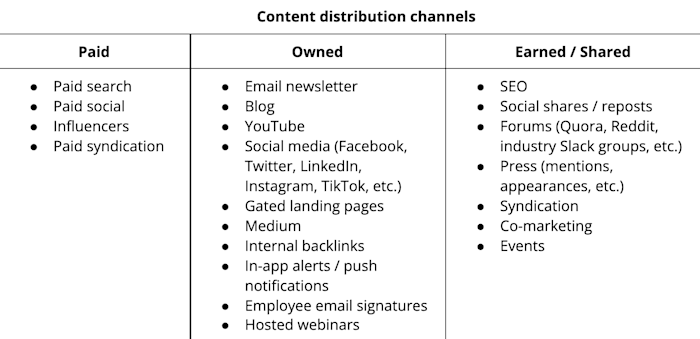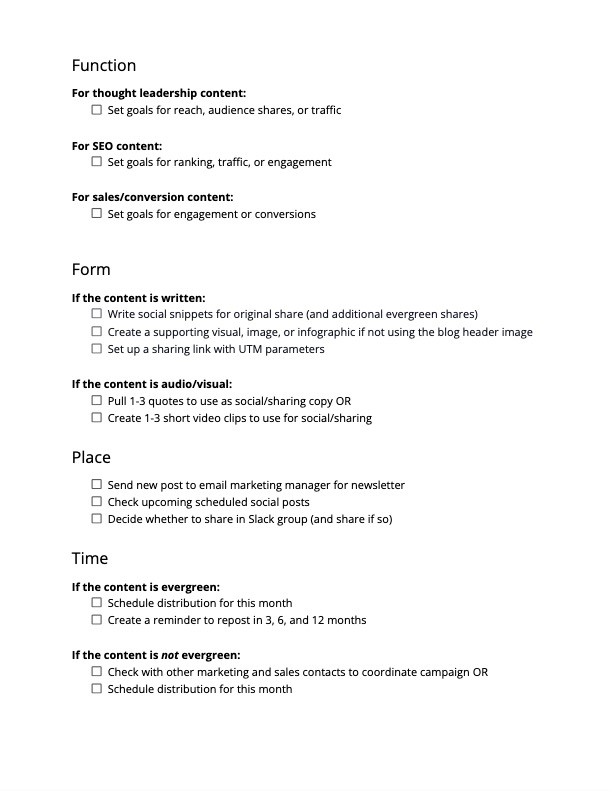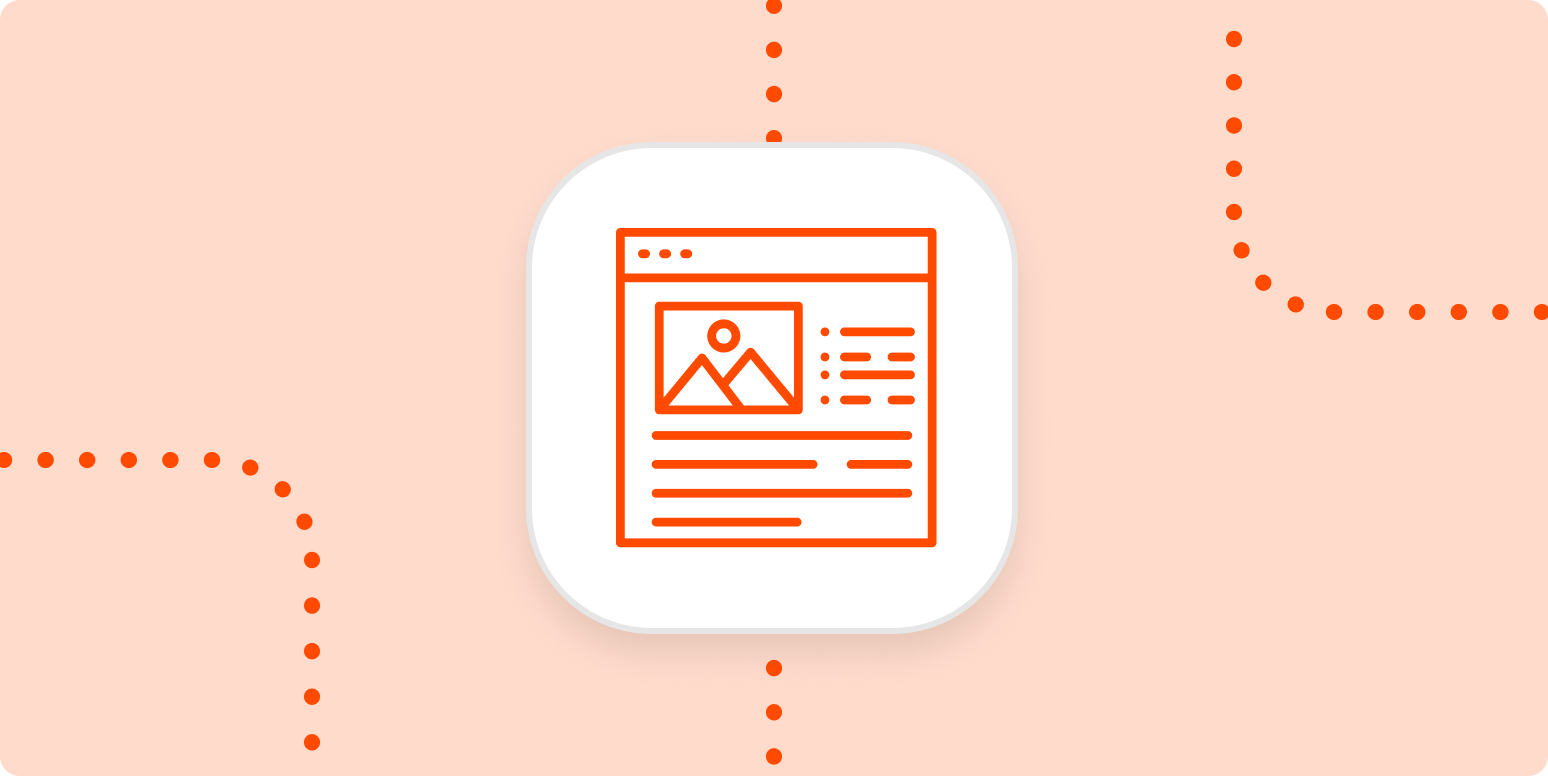If you’re anything like me, content creation is a “like to do” task, while content distribution is a “have to do.” But there’s no skirting around the importance of sharing your content with your audience.
The problem: content distribution advice can feel one-sized and usually involves spinning a lot of plates. There’s no shortage of channels and strategies, and it’s easy to feel like you need to be everywhere. While more might be more for some brands, you don’t need to overwhelm yourself to have a successful distribution strategy.
Let’s agree to skip the one-size-fits-all approach and, instead, create the content distribution checklist that works for your company and audience.
What is a content distribution checklist?
A content distribution checklist outlines a repeatable process, so you can share marketing materials, track their performance, and improve your strategy. You deliver a reliable (and measurable) outcome when you know what steps to take each time.
Whereas many content distribution checklists jump into a mega list of promotional channels, I think there’s a bit more foundational work you need to do first. Each content distribution strategy needs to start by considering these four elements:
-
Place: Where will you share content?
-
Time: When will you post it?
-
Form: What type of content is it?
-
Function: How will you measure its success?
I’ll explain each of these below, but I want to drive home how important it is to consider all four of these items. People often think about place and then ignore the rest—and that’s a recipe for missed opportunities.
Customizing your content distribution strategy
Let’s review each element, so you can create a plan that works for you and your audience.
1. Choose a few primary distribution channels (place)
Consider this your permission slip to let go of posting on every possible channel. You don’t need a strong presence everywhere to succeed, and you can tailor content types to platforms. Your strategy will also have a unique mix of paid, owned, and earned channels depending on your brand and goals.
So how do you pick your channels? Here are a few questions to guide your strategy:
-
What channels do you use now? Which are the most successful?
-
What channels are your competitors using?
-
What’s the effort-to-impact ratio? Are there any channels that are low effort and high impact? (Be sure to avoid high effort, low impact ones.)
-
Which channels fit your brand personality or content format best?
-
Which channels do your customers prefer?
You probably have a list of channels in mind already, but it can’t hurt to review some other options. So in case you need some promotion inspiration, here’s a list of distribution channels to explore.
Example content distribution channels

Of course, within each of these channels, there are endless opportunities. For example, email doesn’t only mean a newsletter that links to your content—how about a short online “course” distributed over the series of a few emails? Feel free to get creative.
2. Establish a sharing cadence (time)
In the same way you can be selective about your distribution channels, you can also hone when you release content into the world. Sending each piece of new content out to every channel right when it’s created is an easy strategy, but you might burn out your audience. There are ways to be more strategic with distribution timing.
Here are some considerations for planning your cadence:
-
Is the piece evergreen? If so, you can set up a schedule to share the piece every few months. Setting up a Zap reminder to let you know it’s time to reshare older content makes this strategy easy.
-
Can you tie content to a campaign, company-wide goal, or product release? Share it along the same timeline.
-
Is there a time of day or day of the week that your audience is most active?
3. Decide if you need additional creative or repurposed content (form)
Depending on where and how you share content, you may need additional visuals to show off your work. At the very least, you’ll need a description to post alongside a link or visual. To avoid any last-minute scrambles in your scheduling tool, ensure your content distribution checklist includes your workflow for repurposing content.
Some of the decisions you’ll need to make include:
-
Do you need a visual to share with the piece? How will you create it?
-
Is your team working with limited content? If so, you may want to repurpose each piece into a few formats to squeeze out as much value as you can.
-
Will particular elements of a piece work better across different channels? If so, do you want to break the content up to share snippets in different places?
Brittany Berger, founder of Work Brighter and content repurposer extraordinaire, notes that you can turn a single blog post into multiple social posts, a video script, an email series, or the basis of a guest post.
4. Pick a success metric (function)
Understanding the performance of each piece you create lets you learn what works best and quantify your work’s impact. Pick a success metric as part of your distribution strategy, so you can find the channels that deliver the most reward over time. Just don’t flee a channel after one flop of a post—it might take some reworking to get into your groove!
Here are some questions to guide your strategy:
-
What types of content categories do you create, and how do their goals vary? For example, thought leadership should drive traffic and reach while bottom-of-the-funnel content focuses on conversions.
-
What benchmarks can you use to compare performance across channels?
-
How does content impact company-wide goals?
Example content distribution checklist
Seeing an idea played out front to back makes it much easier to grasp, so let’s explore a hypothetical. Imagine you’re the Content Marketing Manager at a SaaS company that shares new content to their newsletter, Twitter, and LinkedIn accounts. As the manager, you also occasionally put pieces in an industry Slack group.
Here’s what the content distribution checklist might look like in that scenario:

One last piece of advice: make sure you include this checklist in your content calendar. It can be a matter of linking to a Google Doc, or depending on the tool you use, you might include the checklist within the app. Distribution is just one of many moving parts, and you want to be sure it’s managed alongside the rest of your content production process.
[adsanity_group align=’alignnone’ num_ads=1 num_columns=1 group_ids=’15192′]
Need Any Technology Assistance? Call Pursho @ 0731-6725516







